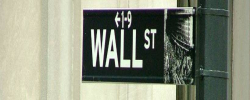1. Imminent RecessionAnalysts expect the world's major economies, including the United States, to slip into a recession this year. Central banks continue raising interest rates to temper demand for consumer goods and services in an effort to rein in raging inflation. The head of International Monetary Fund, Kristalina Georgieva, has warned that a third of the global economy could be hit by a recession in 2023.
2. Stubborn InflationPrice rises will likely be moderate in 2023, helped by weakening demand and falling energy prices. However, stubborn inflation remains a significant challenge, as it erodes purchasing power and can lead to economic instability.
3. Stronger Dollar and Tepid ConsumersThe dollar is up against the euro and yen, making U.S. goods and services more expensive than competing products from Germany and Japan. This, coupled with falling oil prices and hesitant consumer spending, is not supporting the addition of new workers.
4. Productivity GrowthIn 2014, non-farm private sector output grew 2.9%, but hours worked increased 3% — indicating labor productivity growth was near zero. Advances in robotics, logistics, and production design should permit productivity to advance at about 2% annually.
5. Skills GapMany businesses complain about difficulties finding workers with the skills they need. Although the United States has a world-leading network of science and engineering colleges, too few Americans are enrolled.
These challenges present significant hurdles for the U.S. economy. However, they also represent opportunities for policy reform and strategic planning. By addressing these issues head-on, the U.S. can strengthen its economic resilience and continue to play a leading role in the global economy.














